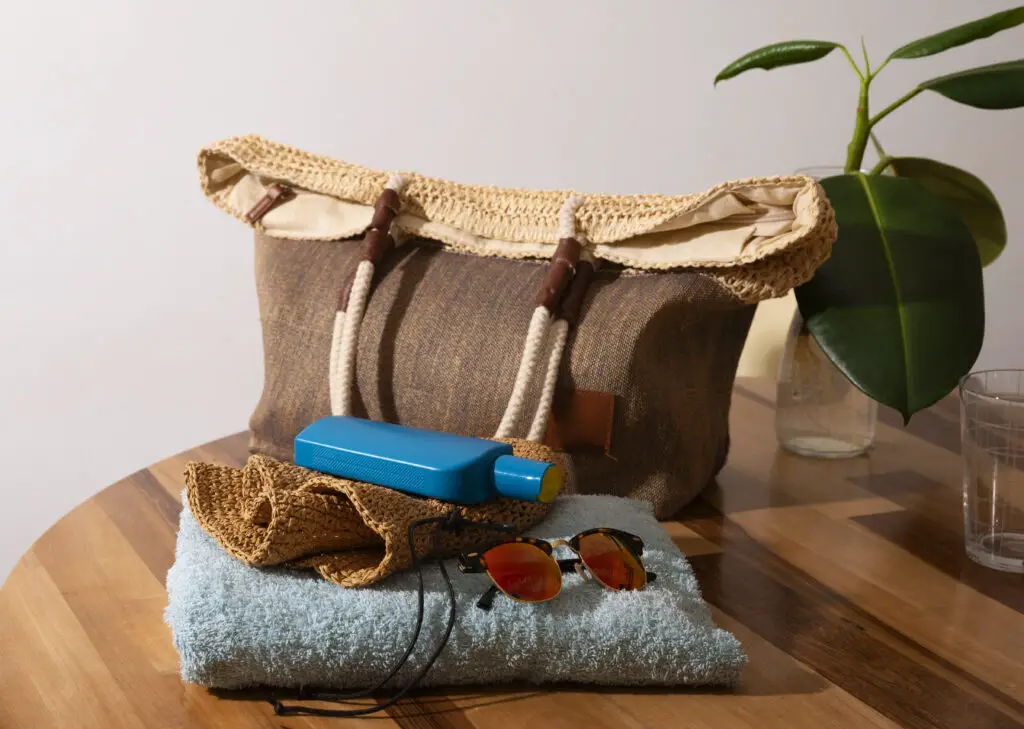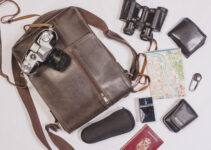Table of Contents
ToggleHave you ever wondered how to keep your Canon camera bag looking fresh and free from dirt and stains? A clean camera bag not only enhances your gear’s appearance but also extends its lifespan.
Dust, grime, and spills can accumulate over time, impacting both aesthetics and functionality.
Regular maintenance is essential to protect your investment and ensure that your equipment remains safe during transport.
In this guide, we will explore effective methods and tips for cleaning your Canon camera bag, helping you maintain its durability and appearance for years to come.
Here how to make a bean bag for camera support?
Can you wash canon camera bag yourself?
Yes, you can wash a Canon camera bag yourself, but it’s essential to do so carefully to avoid damaging the bag or its components. Here’s how:
Check the Care Label: Always check for any care instructions or warnings on the bag’s label.

Remove Contents: Take out all items, including dividers, accessories, and any removable padding.
Surface Cleaning: Use a soft brush or cloth to remove dust and dirt. For stubborn stains, a mild soap solution (water mixed with a small amount of gentle detergent) can be used.
Hand Wash: If the bag is machine washable (check the label), use a gentle cycle with cold water. Otherwise, hand wash it in a tub.
Rinse Thoroughly: Ensure all soap is rinsed out to prevent residue.
Air Dry: Let the bag air dry completely, avoiding direct sunlight or heat sources, to maintain its shape and materials.
Following these steps will help keep your Canon camera bag clean and in good condition.
Can you wash canon camera bag in washing machine?
Washing a Canon camera bag in a washing machine is generally not recommended unless the care label specifically states it’s safe to do so. Many camera bags contain materials and components that can be damaged by the agitation and high spin cycles of a washing machine.
Here, what do you use as a bike camera bag?
If you decide to wash it in the machine, follow these steps:
- Check the Label: Look for any care instructions that allow machine washing.
- Remove Contents: Empty the bag completely, including dividers and removable parts.
- Use a Laundry Bag: Place the bag inside a mesh laundry bag to protect it from damage.
- Select Gentle Cycle: Use a gentle cycle with cold water and a mild detergent.
- Avoid Spin Dry: Skip the spin cycle to prevent distortion.
- Air Dry: Allow the bag to air dry completely, away from direct sunlight or heat sources.
Always consider hand washing as a safer alternative to preserve your bag’s integrity.
How to clean canon camera bag?
Cleaning your Canon camera bag is essential for maintaining its appearance and prolonging its life. Here’s a step-by-step guide:
- Empty the Bag: Remove all items, including dividers and accessories, to ensure a thorough cleaning.
- Shake and Brush: Shake the bag gently to remove loose dirt and debris. Use a soft brush or cloth to wipe down the exterior, focusing on any stubborn spots.
- Spot Clean: For stains, create a mild soap solution using warm water and a gentle detergent. Dampen a cloth with the solution and gently scrub the affected areas.
- Rinse: Use a clean, damp cloth to wipe away any soap residue.
- Air Dry: Let the bag air dry completely in a well-ventilated area, avoiding direct sunlight and heat sources, which can damage the materials.
- Reassemble: Once dry, replace the dividers and accessories, ensuring everything is organized for your next use.
Regular cleaning helps maintain your bag’s functionality and appearance.
7 Tips to clean canon camera bag
1. Empty the Bag Completely
Before starting the cleaning process, ensure that your camera bag is completely empty.
Remove all items, including your camera, lenses, accessories, and dividers. This step is crucial as it allows you to clean every nook and cranny of the bag without damaging your gear.
Check all compartments and pockets for hidden items, like memory cards or batteries. Once emptied, give the bag a gentle shake to dislodge any loose debris.
This initial step sets the stage for a thorough cleaning and helps prevent dirt from being pushed further into the fabric during the process.
2. Dust and Brush Off Dirt
After emptying your bag, use a soft brush or microfiber cloth to remove any dust and dirt from the exterior surfaces. This is especially important for the zippers and seams, where dirt tends to accumulate.
A clean, dry cloth can also be used to wipe down the interior surfaces, removing any particles or dust that may have settled inside.
If your bag has a more textured surface, a soft-bristled brush can help dislodge debris without scratching the material.
Regular dusting will prevent dirt buildup and make the subsequent cleaning steps more effective, allowing for a cleaner and more hygienic bag.
3. Spot Clean Stains
For any stubborn stains on your camera bag, create a mild cleaning solution by mixing warm water with a few drops of gentle detergent.
Dampen a clean cloth with the solution and gently scrub the stained area. It’s essential to test the solution on a small, inconspicuous area first to ensure it doesn’t damage the fabric.
For tough stains, let the solution sit for a few minutes before wiping it away.
Avoid soaking the fabric, as excessive moisture can lead to mold or mildew. This targeted approach effectively removes stains without subjecting the entire bag to intensive cleaning, preserving its integrity and appearance.
4. Use a Damp Cloth for Wiping
Once you’ve spot cleaned, take a clean, damp cloth to wipe down the entire bag, both inside and out. This step helps remove any soap residue from your previous cleaning and further cleans the fabric.
Use a gentle motion to avoid damaging the materials, focusing on areas that may have collected dirt or grime. Make sure to rinse the cloth regularly to avoid redistributing dirt.
For fabric bags, ensure you wring out the cloth well to avoid soaking the material. A thorough wipe-down is crucial for maintaining the bag’s appearance and ensures a fresh, clean environment for your camera gear.
5. Clean Zippers and Hardware
Zippers and other hardware components of your camera bag often collect dirt, dust, and debris. To clean them, use a soft brush or cloth to remove any loose particles.

If the zippers are sticky or grimy, you can apply a small amount of lubricant or silicone spray to keep them functioning smoothly.
Here, what size dry bag for camera?
Avoid using harsh chemicals, as they may damage the finish of the metal. Regularly cleaning the zippers and hardware helps maintain their function and prevents potential snags or jams when opening and closing compartments.
Taking care of these details ensures your bag remains fully functional and visually appealing.
6. Air Dry the Bag
After cleaning, it’s essential to let your camera bag air dry completely. Avoid direct sunlight or heat sources, as they can damage the materials and alter the bag’s shape.
Instead, place it in a well-ventilated area where air can circulate freely. This step helps prevent mold and mildew growth, especially if the bag has absorbed moisture during cleaning.
Ensure that all compartments are open so that they dry thoroughly, and check periodically to ensure there are no damp spots remaining.
Proper drying is critical for maintaining the integrity and longevity of your bag, ensuring it’s ready for your next photographic adventure.
7. Reorganize and Maintain
Once your bag is dry, take this opportunity to reorganize and maintain the interior. Replace dividers and accessories in a way that suits your workflow and ensures easy access to your gear.
Consider using padded inserts for additional protection and organization.
Regularly checking the contents of your bag and ensuring everything is clean will help maintain the bag’s hygiene and efficiency.
Also, set a routine cleaning schedule based on how often you use the bag, adjusting as necessary for dirtier conditions.
By incorporating these habits into your maintenance routine, you’ll prolong the life of your camera bag and ensure it remains a reliable companion for your photography needs.
7 Steps to clean Canon camera bag
Here are seven steps to effectively clean your Canon camera bag:
1. Remove All Contents
The first step in cleaning your Canon camera bag is to remove all items inside it. Take out your camera, lenses, memory cards, and any other accessories, including dividers or padded inserts.
This step is crucial to prevent any accidental damage to your gear during the cleaning process. Make sure to check all compartments, pockets, and hidden spaces to ensure nothing is left behind.
Here, how to clean billigham canvas?
You can take this opportunity to inspect your equipment for any signs of wear or damage, ensuring everything is in good working order.
Once the bag is completely empty, give it a gentle shake to dislodge any loose dirt or debris. This foundational step sets the stage for a thorough and effective cleaning of the bag itself.
2. Brush Off Loose Dirt
Once your camera bag is empty, it’s time to remove any loose dirt or debris from the exterior and interior surfaces.
Use a soft brush, like a lint brush or a clean, dry microfiber cloth, to gently brush away dirt, dust, and particles.
Pay special attention to the zippers, seams, and pockets, as these areas often collect dirt.
If your bag has a textured surface, the brush can help dislodge trapped particles without scratching or damaging the material.
This initial dusting step is essential, as it prevents dirt from becoming ground into the fabric during subsequent cleaning steps.
A clean surface allows for more effective cleaning and helps maintain the bag’s appearance and hygiene over time.
3. Spot Clean Stains
After brushing off loose dirt, inspect your bag for any stains or marks that need attention.
To spot clean, mix a small amount of mild detergent with warm water in a bowl. Dampen a clean cloth in the solution, then gently rub the stained areas in a circular motion.
Be sure to test the solution on a small, inconspicuous area first to avoid any potential discoloration or damage.
For tougher stains, you may need to let the soapy solution sit for a few minutes before wiping it away. Avoid soaking the fabric, as excessive moisture can lead to mold or mildew growth.
Spot cleaning helps preserve the bag’s appearance and keeps it looking new, extending its overall lifespan.
4. Wipe Down with a Damp Cloth
After spot cleaning, use a clean, damp cloth to wipe down the entire bag, both inside and out.
This step helps remove any soap residue from the spot cleaning process and further cleans the fabric. Be sure to wring out the cloth well to avoid soaking the material; excess water can damage the bag.
Gently wipe the surfaces using a light touch to avoid causing any damage. Focus on areas that may have accumulated grime or dust over time.
Here, how to put a tripod strap on a camera bag?
This thorough wipe-down is essential for maintaining a clean and hygienic environment for your camera gear, ensuring that your bag remains fresh and free from dirt or odors.
5. Clean Zippers and Hardware
Zippers and hardware are essential components of your camera bag that can easily accumulate dirt and grime. To clean them, use a soft brush or a clean cloth to remove any debris.
If the zippers are sticky, apply a small amount of lubricant or silicone spray to ensure smooth operation. It’s important to avoid harsh chemicals that could damage the finish of the metal or the surrounding fabric.
Regularly cleaning the zippers and hardware helps prevent potential snags or jams, ensuring that your bag functions correctly.
Taking care of these details enhances the overall longevity and functionality of your camera bag, allowing you to access your gear easily and efficiently.
6. Air Dry the Bag
After completing the cleaning process, it’s essential to allow your Canon camera bag to air dry completely.
Avoid using a dryer or placing it near direct heat sources, as excessive heat can warp or damage the materials.
Instead, place the bag in a well-ventilated area where air can circulate freely. Open all compartments, pockets, and zippers to facilitate thorough drying.
This step is crucial for preventing mold and mildew growth, particularly if the bag absorbed moisture during cleaning.
Regularly checking the bag while it dries can help you ensure there are no damp spots remaining. Proper drying not only preserves the bag’s shape and materials but also prepares it for your next photography outing.
7. Reorganize and Maintain
Once your bag is completely dry, take the time to reorganize the interior and replace all your gear. This is an excellent opportunity to assess your camera accessories and ensure everything is in its designated place.
Use padded dividers to keep your equipment organized and protected. Additionally, consider adding any necessary items, such as lens caps or cleaning supplies, to make your bag more efficient for your next outing.
Establish a routine maintenance schedule based on your usage frequency, cleaning your bag regularly to prevent dirt buildup.
By incorporating these habits, you’ll maintain the functionality and appearance of your Canon camera bag, ensuring it serves you well for years to come.
5 Methods to clean canon camera bag
Here are five effective methods to clean your Canon camera bag:
1. Spot Cleaning with Mild Detergent
Spot cleaning is a highly effective method for removing stains and marks from your Canon camera bag without requiring a full wash. To begin, create a solution of warm water and a few drops of mild detergent.
Use a clean cloth or sponge to apply the solution to the stained area, gently rubbing in a circular motion.
It’s essential to test the solution on a small, inconspicuous area first to ensure it doesn’t cause discoloration. For stubborn stains, let the solution sit for a few minutes before wiping it away with a damp cloth.
Avoid soaking the fabric, as excess moisture can lead to mold or mildew growth. Spot cleaning is perfect for maintaining the bag’s appearance and is a quick way to keep it looking fresh, especially between more thorough cleanings.
2. Using a Damp Cloth for Wiping
Another effective method for cleaning your Canon camera bag is using a damp cloth. This technique is ideal for removing surface dust and grime without the need for extensive cleaning. Start by emptying the bag of all its contents.

Here, how to use camera bag dividers?
Dampen a microfiber cloth with plain water, ensuring it’s not overly wet. Wipe down the entire exterior of the bag, including zippers, seams, and any pockets. For the interior, use the same cloth to gently clean the surfaces, removing any accumulated dirt or debris.
This method is particularly useful for regular maintenance, as it helps prevent dirt buildup and keeps the bag looking neat.
Be sure to allow the bag to air dry after cleaning, as moisture can lead to mold or mildew growth if left trapped inside.
3. Vacuuming with a Brush Attachment
Using a vacuum cleaner with a brush attachment is an excellent method for deep cleaning your Canon camera bag, particularly for removing dust and debris from hard-to-reach areas.
Start by emptying the bag completely, then turn it inside out if possible to expose all compartments.
Attach the brush nozzle to your vacuum cleaner and gently run it over the bag’s surface, focusing on seams, zippers, and pockets where dirt tends to accumulate.
The suction will help lift away dust and debris without damaging the fabric. This method is especially effective for bags made from fabric or nylon materials.
After vacuuming, you can follow up with a damp cloth for any remaining stains or spots. Regular vacuuming helps maintain a clean environment for your camera gear and prolongs the bag’s lifespan.
4. Hand Washing for Deep Cleaning
For a more thorough cleaning, hand washing your Canon camera bag can be an effective method, especially if it has become heavily soiled.
Start by emptying the bag and checking the care label for any specific washing instructions. Fill a bathtub or large basin with lukewarm water and add a small amount of mild detergent.
Submerge the bag and gently agitate the water, using your hands to scrub any dirty areas with a soft cloth or sponge. Pay attention to zippers and seams, as these areas often collect grime.
After washing, rinse the bag thoroughly with clean water to remove any soap residue.
Avoid wringing or twisting the bag to prevent damage; instead, press out excess water gently. Allow the bag to air dry completely in a well-ventilated area, ensuring all compartments are open to prevent moisture buildup.
5. Using a Steam Cleaner
A steam cleaner is an innovative method for cleaning your Canon camera bag, especially if you want to sanitize and refresh the fabric without soaking it.
Begin by emptying the bag and preparing your steam cleaner according to the manufacturer’s instructions.
Using a handheld steam nozzle, carefully apply steam to the bag’s surface, focusing on areas with visible dirt or stains. The heat from the steam can help loosen grime and disinfect the fabric.
Here, how to clean rust from vintage camera?
It’s important to keep the nozzle at a safe distance to avoid damaging the material with direct heat.
After steaming, use a clean, dry cloth to wipe away any loosened dirt. This method not only cleans but also refreshes the bag, eliminating odors and bacteria.
Ensure the bag is fully dried and aired out before using it again to maintain its integrity and longevity.
5 Benefits to clean canon camera bag
1. Prolongs Lifespan
Regular cleaning significantly extends the lifespan of your Canon camera bag. Dirt, dust, and debris can wear down the materials and cause premature deterioration.
By maintaining cleanliness, you prevent potential damage, ensuring your bag remains functional and visually appealing for years.
A well-cared-for bag is less likely to experience issues like fraying, tearing, or fading, allowing you to protect your camera gear effectively.
Investing time in regular maintenance pays off in the long run, ensuring you get the most value from your camera bag.
2. Enhances Functionality
A clean camera bag improves its functionality. Dust and debris can accumulate in pockets and compartments, making it difficult to access your gear quickly. By keeping the bag clean and organized, you ensure that your camera, lenses, and accessories are easily accessible when needed. This is particularly important during shoots when time is of the essence. An organized bag also helps you remember where everything is stored, reducing the likelihood of misplacing essential items and enhancing your overall photography experience.
3. Protects Your Gear
Cleaning your camera bag helps protect your valuable gear from dirt and moisture.
A dirty bag can transfer dust, debris, and contaminants to your camera and lenses, potentially affecting their performance. Additionally, regular cleaning prevents the growth of mold and mildew, which can occur in damp conditions.
By maintaining a clean and hygienic environment inside your bag, you ensure your camera and accessories remain in optimal condition, safeguarding your investment and ensuring reliable performance during shoots.
4. Improves Appearance
A clean camera bag looks more appealing and professional.
Over time, dirt, stains, and scuffs can accumulate, making your bag appear worn and neglected. Regular cleaning restores its appearance, enhancing your overall image as a photographer.
A well-maintained bag reflects your commitment to your craft and can create a positive impression when working with clients or peers.
Additionally, a clean bag contributes to your confidence, allowing you to focus on capturing great shots without being distracted by the state of your equipment.
5. Prevents Unpleasant Odors
Regular cleaning of your Canon camera bag helps prevent unpleasant odors that can develop from dirt, sweat, and moisture.
A bag that is not cleaned can harbor bacteria and mildew, leading to musty smells that can linger on your gear.
By incorporating routine cleaning into your maintenance schedule, you ensure your bag remains fresh and odor-free.
This is especially important if you frequently use your bag in various environments or during outdoor shoots. A clean and fresh-smelling bag enhances your overall experience and comfort while working.
Related faq’s
How often should I clean my Canon camera bag?
It’s recommended to clean your Canon camera bag every few months, depending on usage. If you frequently use your bag in dusty or wet conditions, more regular cleaning may be necessary.
Additionally, perform spot cleaning after each outing to address any stains or dirt before they set in. Keeping a consistent cleaning schedule helps maintain the bag’s condition and prolongs its lifespan.
Can I machine wash my Canon camera bag?
Whether you can machine wash your Canon camera bag depends on the specific model and its materials. Always check the care label for washing instructions.
If the label permits machine washing, use a gentle cycle with cold water. However, hand washing is generally safer for preserving the bag’s shape and materials, especially if it contains padded inserts or delicate fabric.
What cleaning products should I use?
For cleaning your Canon camera bag, use a mild detergent mixed with warm water for spot cleaning. Avoid harsh chemicals or bleach, as they can damage the fabric and colors.
A gentle soap specifically designed for fabrics is ideal. Always test any cleaning solution on a small, inconspicuous area first to ensure it doesn’t cause discoloration or damage.
Here, how to make a spy camera bag?
How can I remove stubborn stains?
To remove stubborn stains from your Canon camera bag, create a solution of warm water and mild detergent. Apply the solution to the stained area using a soft cloth or sponge, gently scrubbing in a circular motion.
For tough stains, allow the solution to sit for a few minutes before wiping it away. If necessary, repeat the process or consider using a fabric-safe stain remover.
Is it safe to use a steam cleaner?
Yes, using a steam cleaner can be a safe and effective method for cleaning your Canon camera bag. The heat from the steam helps disinfect and refresh the fabric without soaking it.
When using a steam cleaner, keep the nozzle at a safe distance to avoid damaging the material. This method is particularly useful for sanitizing and removing odors while maintaining the integrity of the bag.
What should I do if my bag smells musty?
If your Canon camera bag smells musty, first empty it and inspect for any moisture or dampness.
To eliminate odors, clean the interior using a damp cloth with mild detergent, followed by a thorough air drying in a well-ventilated area. You can also place baking soda inside the bag to absorb odors and leave it overnight. Ensure the bag is completely dry before using it again to prevent mold growth.
Can I use fabric softener when cleaning my camera bag?
It’s generally not recommended to use fabric softener when cleaning your Canon camera bag. Fabric softeners can leave residues that may attract dirt and grime over time, impacting the bag’s cleanliness and durability.
Instead, stick to a mild detergent specifically designed for fabrics to avoid any unwanted effects on the bag’s material and performance.
Conclusion
Cleaning your Canon camera bag is essential for maintaining its appearance, functionality, and longevity.
By following the appropriate cleaning methods, such as spot cleaning, using a damp cloth, and deep cleaning when necessary, you can ensure your bag remains in excellent condition.
Regular maintenance not only protects your valuable gear from dirt and moisture but also enhances your overall photography experience.
Make it a habit to inspect and clean your bag routinely, addressing any stains or odors promptly.
With proper care, your Canon camera bag will serve you well for years, providing reliable protection for your equipment during every shoot







